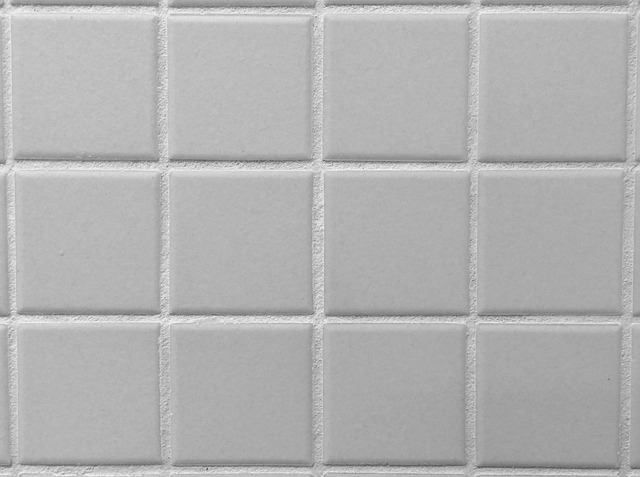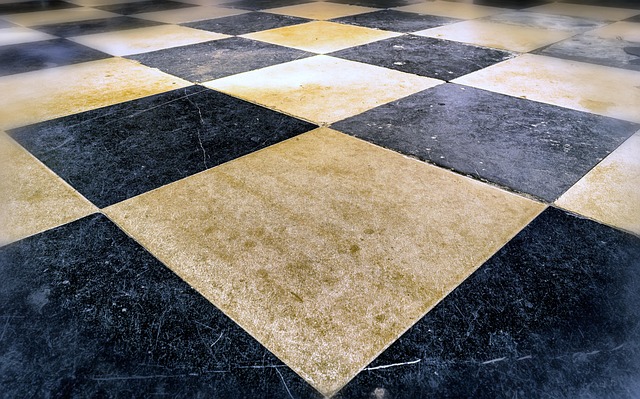Restoring old tile and grout involves addressing specific issues like discoloration, pitting, or structural damage. Start with safety precautions and surface preparation. Remove old grout using tools like grout saws, chisels, or chemical removers based on damage severity. Clean tile surfaces thoroughly to dislodge dirt and stains. Match original grout color accurately for a seamless restoration. Apply fresh grout evenly, set it, then seal to protect against moisture and stains. Regular maintenance, including cleaning and resealing every 12-24 months, preserves the restored look.
Restoring old tile and grout can transform your space, but it requires understanding the process of grout damage, from causes like moisture intrusion and mold growth to various types affecting both tiles and grout. This article guides you through the entire restoration journey, starting with safety precautions when preparing the area. Learn effective techniques for removing old grout, cleaning tile surfaces, mixing new grout, applying it properly, sealing for protection, and maintaining your restored tiles.
Understanding Grout Damage: Causes and Types

Tile and grout, once vibrant and pristine, can deteriorate over time due to various factors. Understanding the causes of grout damage is the first step in knowing how to restore old tile and grout effectively. This includes both structural and aesthetic issues caused by water penetration, leading to mold growth or calcium deposits that discolor and weaken the grout. Another common type of damage involves uneven wear and tear, where some grout lines become shallower than others due to heavy foot traffic or improper cleaning methods.
The key to successful restoration lies in identifying these specific types of damage. For example, mild discoloration and surface pitting can often be addressed with a deep clean and re-grouting. In contrast, severe structural deterioration may require more intensive methods, such as grout replacement or even tile removal and installation of new tiles. Knowing how to recognize these issues is crucial for determining the best course of action when it comes to restoring your old tile and grout.
Preparing the Area for Restoration: Safety First

When preparing to restore old tile and grout, safety should always be the top priority. Before starting any restoration work, ensure that the area is well-ventilated to prevent inhaling harmful dust and fumes from outdated sealers or cleaning products. Put on protective gear, including gloves, goggles, and a respirator mask, to shield yourself from debris and irritants. Remove all furniture and cover nearby surfaces with drop cloths to protect them from stains and damage.
Additionally, identify the type of grout and tiles you’re working with to choose the right restoration methods. Inspect the floor for any damaged or loose tiles, and address these issues before proceeding. This meticulous preparation ensures a successful restoration process and guarantees that your tiled area will look as good as new while maintaining a safe environment throughout.
Removing Old Grout: Tools and Techniques

Removing old grout is a crucial step in how to restore old tile and grout. The process involves several tools and techniques, each suited for different levels of grout damage and tile condition. For small areas with intact tiles, a grout saw or hand chisel can be effective. Grout saws, both manual and electric, are designed to cut through grout lines cleanly without damaging the tiles. Hand chisels, on the other hand, are suitable for more intricate or curved surfaces.
For larger or more severely damaged areas, a combination of tools might be necessary. A hammer and chisel can break up stubborn grout, while wire brushes help scrub away residue. Chemical grout removers can also aid in this process by softening and dissolving old grout, making it easier to remove. It’s important to follow the manufacturer’s instructions when using these products to ensure safety and effectiveness.
Cleaning Tile Surfaces: Getting Rid of Stains

Cleaning tile surfaces is a crucial step in how to restore old tile and grout. Over time, tiles can become stained by dirt, mold, and other debris, especially in high-traffic areas or kitchens. Before attempting any grout restoration techniques, it’s essential to thoroughly clean the tile to ensure the best results. Start by vacuuming or sweeping the floor to remove loose debris. Then, use a mild detergent and warm water to create a cleaning solution. Apply this mixture to the tiles with a soft-bristled brush, focusing on stained areas. Scrub gently but firmly to dislodge any built-up grime. Rinse the tiles well with clean water to eliminate soap residue, ensuring no traces remain.
This initial cleaning process will help prepare the tile and grout for further restoration work. By removing stains, you’ll be able to better assess the grout’s current state and decide on the most effective repair or replacement methods. Remember, taking the time to properly clean your tiles is a vital step in achieving that like-new look for your old tile and grout.
Mixing New Grout: Color Matching and Consistency

When restoring old tile and grout, one of the most critical steps is mixing new grout that perfectly matches the original color and consistency. To achieve this, start by gathering high-quality grout powder in the same hue as your existing tiles. Next, carefully measure the water required based on the grout manufacturer’s instructions to ensure the right viscosity. Gradually add water while stirring until you attain a smooth, lump-free mixture that mirrors the look and feel of the original grout.
The consistency is key; too thin or thick can result in poor adhesion and an uneven finish. Aim for a thick enough grout to hold its shape when squeezed between your fingers but still flow easily with a trowel. With the right color match and consistency, you’ll achieve a seamless restoration that complements your space’s aesthetic.
Applying Fresh Grout: Best Practices and Tips

Applying fresh grout is a key step in how to restore old tile and grout. Begin by thoroughly cleaning the tile surface and removing any existing grout with a wire brush or grout saw. This ensures a clean canvas for your new grout. Next, prepare your grout mixture according to the manufacturer’s instructions, using the correct ratio of water and grout powder. For best results, use a notched trowel to apply the grout, filling each joint evenly. Work quickly but carefully, as fresh grout sets within minutes. Ensure even pressure along each tile edge for consistent depth.
After applying the grout, use a damp sponge to wipe away any excess, following the direction of the tiles’ grooves. Allow the grout to set completely – usually 24 hours – before sealing it with a suitable grout sealer. This final step protects against moisture and stains, ensuring your restored tiles look as good as new for years to come.
Sealing and Protecting Restored Grout: Longevity Strategies

After successfully restoring your old tile and grout, the next crucial step is sealing and protecting the renewed surface. This involves applying a high-quality grout sealer to create a protective barrier against moisture, stains, and dirt. Moisture intrusion can cause grout to deteriorate faster, so sealing helps extend its life significantly.
Choosing the right sealer is key; opt for a product specifically designed for grout, offering long-lasting protection. Regular reapplication every 12-24 months will ensure your grout remains in top condition, maintaining the freshly restored look and preventing future damage. This simple maintenance step can make all the difference in the longevity of your tile and grout, keeping it looking vibrant and pristine for years to come.
Final Touches and Maintenance: Keeping Your Tiles Looking Great

After completing the grout restoration process, it’s crucial to understand how to maintain your newly revitalized tiles and grout. Regular cleaning is key; use a mild detergent and a soft-bristled brush to gently remove any dirt or stains. Avoid harsh chemicals that could damage the restored surface.
To keep your tiles looking their best over time, consider sealing the grout with a high-quality sealer. This will create a protective barrier, making it easier to clean and preventing stains from setting in. Additionally, regularly inspect the grout for any signs of damage or discolouration, as early detection will make repairs simpler and less invasive, ensuring your tiles remain looking as good as new for years to come.
